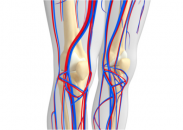Read the most outstanding articles from SOLACI-SBHCI 2023 Congress. In this case, check the presentation by Dr. João Luiz Frighetto, entitled “Acute pulmonary embolysmworkflow: Patient Screening & Endovascular treatment indications”
CLOUT Registry: Thrombectomy in TVP with ClotTriever
Safety and efficacy of the ClotTriever device in extended deep vein thrombosis. The endovascular treatment of thromboembolic disease has evolved and new devices have come out in the last few years to reduce morbimortality from its complications. Sub-treating this pathology has long term implications, such as reduced quality of life, limiting functional class and, worst…
Virtual ACC 2020 | COMPASS Sub-Analysis: Diabetes Increases the Benefit of Rivaroxaban Combined with AAS
In patients with stable coronary or peripheral artery disease, diabetes increases the benefit of combining low doses of rivaroxaban and aspirin vs. aspirin alone. This analysis was pre-specified in the COMPASS protocol and was presented virtually for the ACC 2020 and simultaneously published in Circulation. Patients with diabetes, showed numerically greater reduction in terms of…
New European Guidelines on the Management of Lower Limb Acute Ischemia
Clinical practice guidelines are usually tedious and, frankly, while a lot of people make an enormous effort to write them, they are ultimately read in full by just a few. These new European Guidelines on the Management of Lower Limb Acute Ischemia represent a special team effort, since they include physicians, cardiologists, surgeons, and interventionists,…
Vena Cava Filter for All Patients After Severe Trauma
Until today, there was no evidence warranting the early implantation of a vena cava filter for the reduction of the risk of pulmonary embolism in patients with severe trauma and contraindication to prophylactic anticoagulation. This article, soon to be published in the New England Medical Journal (NEJM), brings us such evidence and we surrender to…
HIV and Peripheral Artery Disease: Acknowledging the Association
The role of human immunodeficiency virus (HIV) in the development of vascular disease (specifically peripheral artery disease) remains unclear. Is the virus per se the direct cause of this disease or is it a consequence of dyslipidemia, one of the adverse effects of antiretrovirals? This study looked into the effect of HIV infection on peripheral…
Antithrombotics after Venous Stenting: Rather Different from Coronary Artery Stenting
Should the Antithrombotic/antiplatelet therapy following 10.0 by 60 mm stent implantation to the subclavian vein of a chronic kidney patient be the same as one following a 3.0 by 18 mm stent implantation to the second segment of the left anterior descending artery of this same patient? The daily practice of many interventional cardiologists performing…
What’s New in the European Guidelines on Peripheral Arterial Disease
Since the last version of the European guidelines on the diagnosis and treatment of peripheral arterial disease in 2011, there have been many trials and registries that warrant guideline adjustments in many aspects. The first novelty is the teamwork that gave way to these guidelines, which were written in collaboration with the European Society of…
What is the effect of statins on amputations, and survival in peripheral vascular disease?
The prevalence of peripheral arterial disease is between 15% and 20% of patients older than 65 years and its severity is greatly underestimated. In fact, annual mortality is higher in patients with peripheral arterial disease (8.2%) than in those after acute myocardial infarction (6.3%). Despite the above, medical advice and efforts to modify risk factors…
Inferior Vena Cava Filters in Recurrent Thromboembolism: Yes or No?
Courtesy of Dr. Guillermo Migliaro. At present, there is no clear evidence in favor of inferior vena cava filters (IVC) for patients developing recurrent symptomatic venous thromboembolism (VTE), and the existing guideline recommendations from the different societies are contradicting. The aim of this study was to assess the effectiveness of these devices in patients…
Mortality Reduction with Vena Cava Filters
Original Title: Outcomes after Vena Cava Filter Use in Non-Cancer Patients with Acute Venous Thromboembolism: A Population-Based Study. Reference: Richard H. White et al. Circulation. 2016 Apr 5. Epub ahead of print. The evidence on the benefits of vena cava filters is limited. This retrospective study analyzed all patients with baseline oncological processes admitted to…
- 1
- 2










